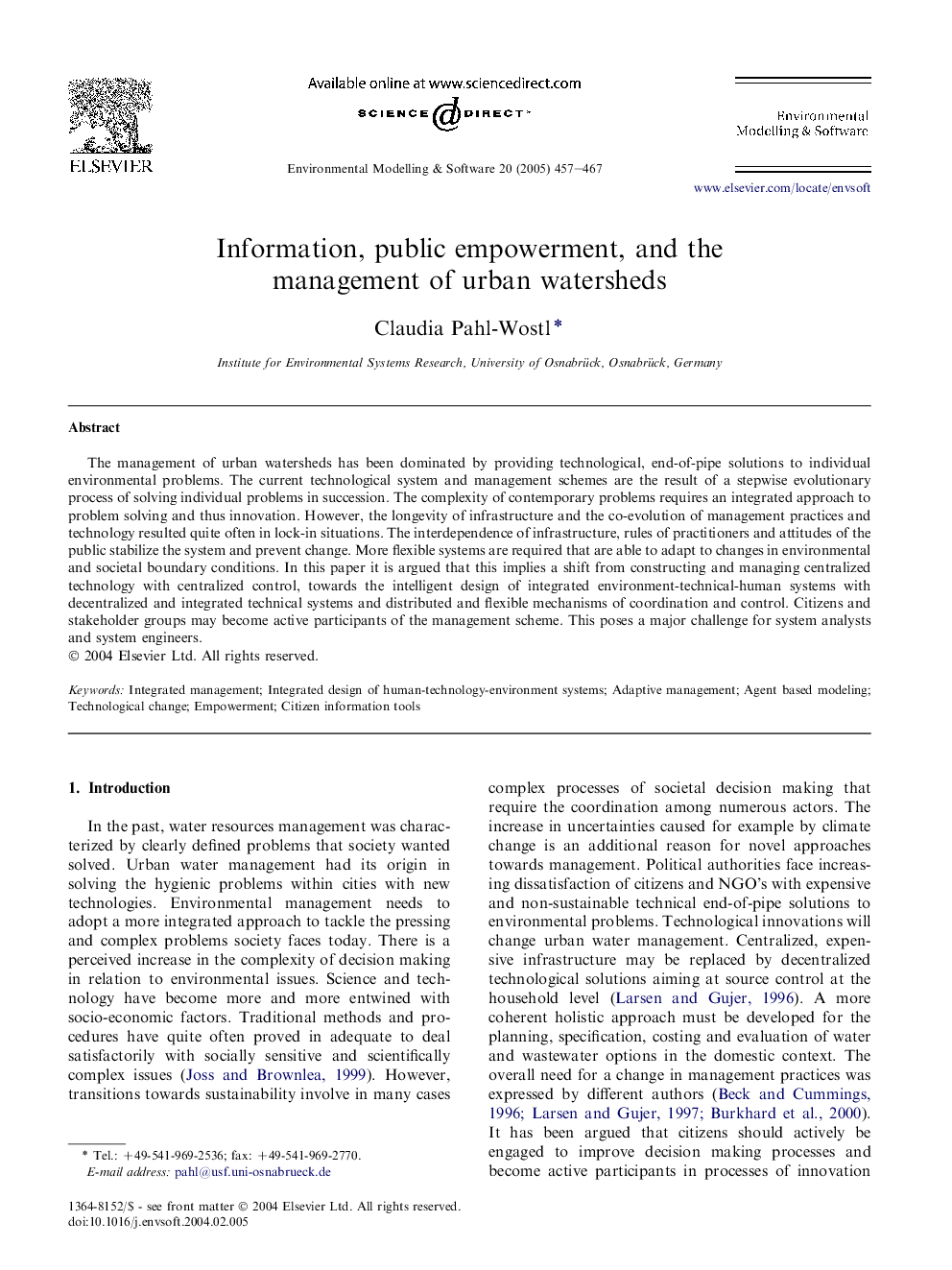| Article ID | Journal | Published Year | Pages | File Type |
|---|---|---|---|---|
| 10371237 | Environmental Modelling & Software | 2005 | 11 Pages |
Abstract
The management of urban watersheds has been dominated by providing technological, end-of-pipe solutions to individual environmental problems. The current technological system and management schemes are the result of a stepwise evolutionary process of solving individual problems in succession. The complexity of contemporary problems requires an integrated approach to problem solving and thus innovation. However, the longevity of infrastructure and the co-evolution of management practices and technology resulted quite often in lock-in situations. The interdependence of infrastructure, rules of practitioners and attitudes of the public stabilize the system and prevent change. More flexible systems are required that are able to adapt to changes in environmental and societal boundary conditions. In this paper it is argued that this implies a shift from constructing and managing centralized technology with centralized control, towards the intelligent design of integrated environment-technical-human systems with decentralized and integrated technical systems and distributed and flexible mechanisms of coordination and control. Citizens and stakeholder groups may become active participants of the management scheme. This poses a major challenge for system analysts and system engineers.
Keywords
Related Topics
Physical Sciences and Engineering
Computer Science
Software
Authors
Claudia Pahl-Wostl,
